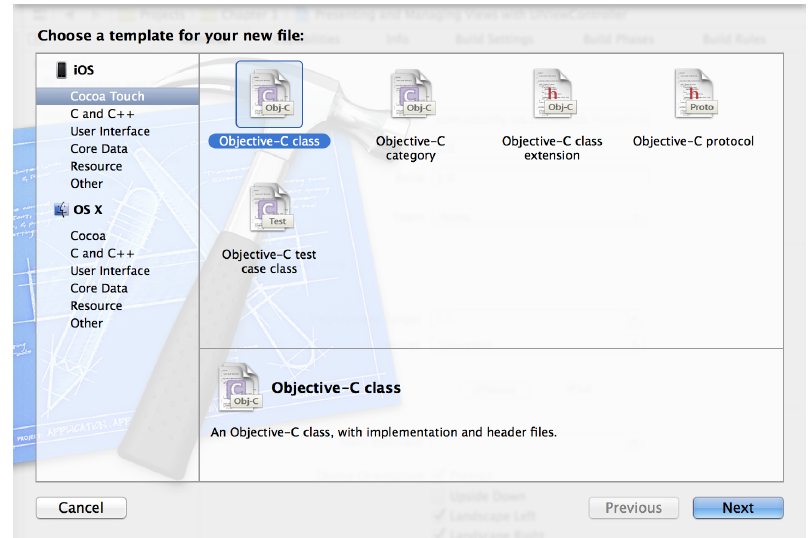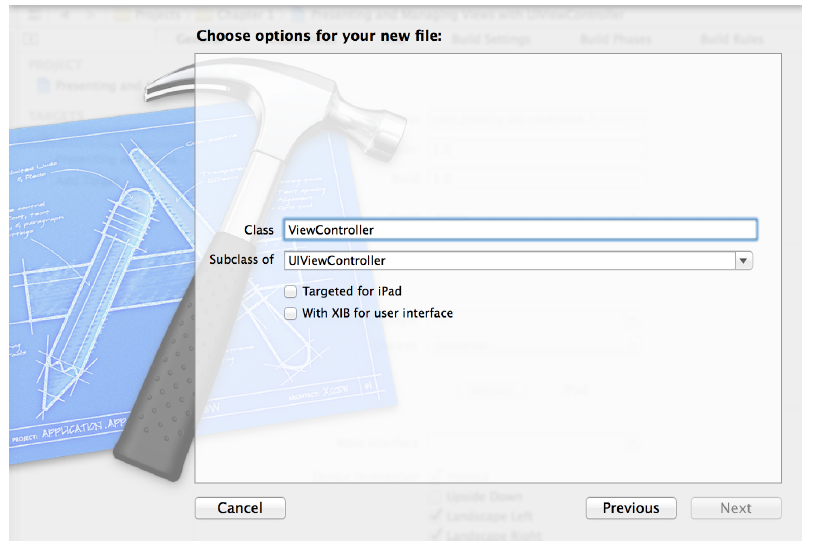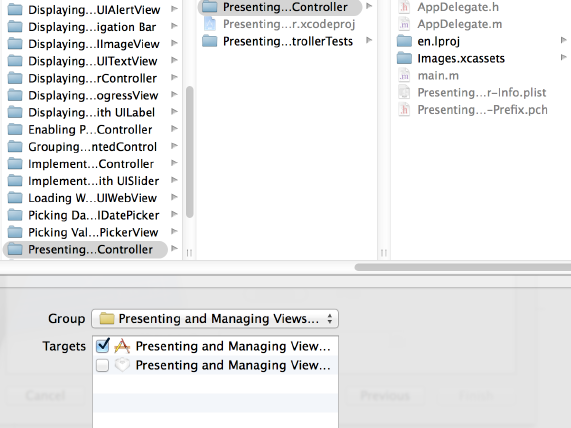Presenting and Managing Views with UIViewController
Problem
You want to switch among different views in your application.
Solution
Use the UIViewController class.
(
Apple’s strategy for iOS development was to use the model-view-controller (MVC) division
of labor.
Views are what get displayed to users, while the model is the data that
the app manages, or the engine of the app.
The controller is the bridge between the model and the view.
The controller, or in this case, the view controller, manages the relationship between the view and the model.
)
creating a view controller without a .xib file
1. created an application using the Empty Application template in Xcode
2. create a new view controller for your app
a) In Xcode, select the File menu and then choose New → New File...
b) In the New File dialog, make sure iOS is the selected category on the left and that
Cocoa Touch is the chosen subcategory. Once you’ve done that, select the New
Objective-C class

c) On the next screen, make sure that the “Subclass of ” the text field says UIView
Controller. Also make sure that neither the “Targeted for iPad” nor the “With XIB
for user interface” checkboxes is selected

d) Save your controller

e) Now find the application:didFinishLaunchingWithOptions: method of the app
delegate and instantiate the view controller and set it as the root view controller of
your window
- (BOOL) application:(UIApplication *)application didFinishLaunchingWithOptions:(NSDictionary *)launchOptions { self.viewController = [[ViewController alloc] initWithNibName:nil bundle:nil]; self.window = [[UIWindow alloc] initWithFrame:[[UIScreen mainScreen] bounds]]; /* Make our view controller the root view controller */ self.window.rootViewController = self.viewController; // set the view background self.window.backgroundColor = [UIColor whiteColor]; [self.window makeKeyAndVisible]; return YES; }
Go ahead and run the app on the simulator. You will now see a plain white view on the
screen. Congratulations! You just created a view controller, and now you have access to
the view controller and its view object.
if you had selected the “With XIB for user interface” checkbox, Xcode would have also generated a .xib file for you. In that
case, you can load your view controller from that .xib file by passing the .xib file’s name(without the extension)
self.viewController = [[ViewController alloc]
initWithNibName:@"ViewController"
bundle:nil];

